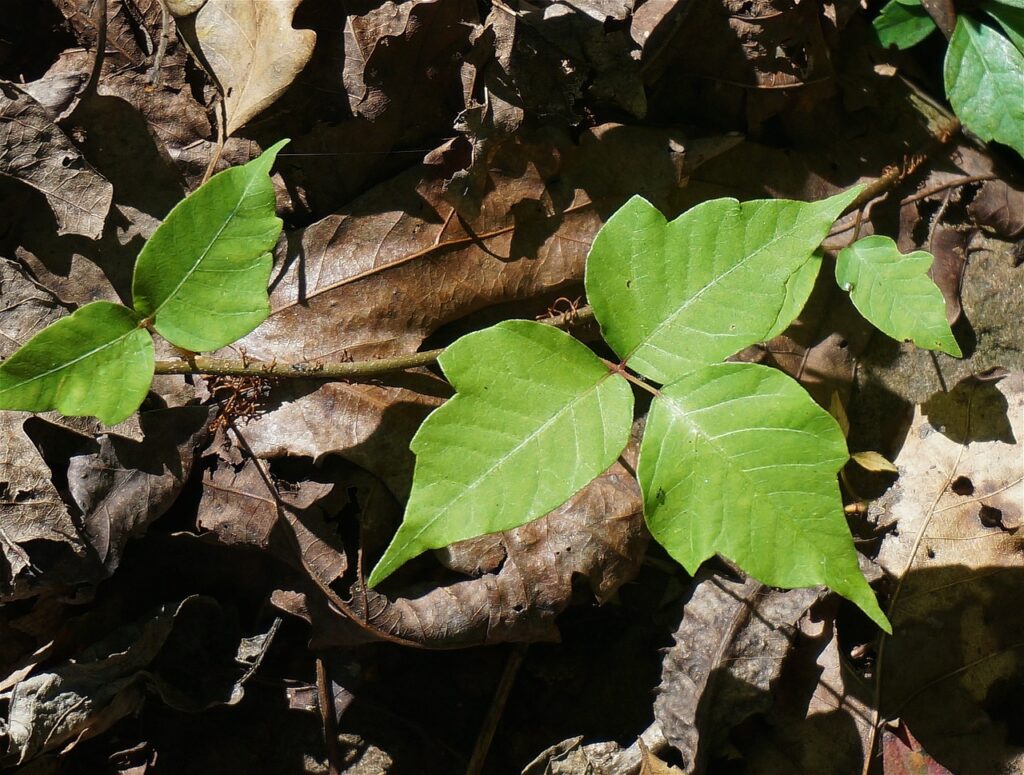If you spend time working in your yard, there’s a good chance you’ll encounter poison ivy at some point. This pesky plant is notorious for causing an itchy, uncomfortable rash, but with the right precautions, you can avoid its irritating effects. In this blog, we’ll cover how to identify poison ivy, tips for preventing exposure, and what to do if you discover it on your property.
Identifying Poison Ivy
The first step in protecting yourself is learning how to recognize poison ivy. Here’s what to look for:
Leaf Pattern: The plant typically has groups of three leaflets on a single stem. The saying “Leaves of three, let it be” is a helpful reminder.
Leaf Shape and Color: The leaves can be smooth, slightly toothed, or lobed, and their color varies from reddish in spring to green in summer, and yellow, orange, or red in fall.
Growth Style: Poison ivy grows as a low shrub, a climbing vine (often with hairy-looking aerial roots), or a ground cover.
Berries: In late summer or fall, it may produce white or yellowish berries.
Tip: Poison ivy can be mistaken for harmless plants like box elder or Virginia creeper, so familiarize yourself with their differences before yard work.
How to Avoid Poison Ivy When Working in Your Yard
Protecting yourself from poison ivy exposure requires proper preparation and awareness. Here’s how to reduce your risk:
Wear Protective Clothing:
Long sleeves, pants, gloves, and closed-toe shoes create a physical barrier between your skin and the plant.
Tuck your pants into your socks and wear disposable or washable gloves when handling brush or weeds.
Choose the Right Gear:
Use thick, rubber-coated gloves instead of fabric ones, as the plant’s oil (urushiol) can seep through fabric.
Consider wearing safety glasses or goggles if working near vines, as broken stems can release sap.
Be Cautious When Removing Weeds:
Don’t pull poison ivy by hand. Even a small amount of oil on your skin can cause a rash.
Use a shovel or garden tool to remove plants, keeping a safe distance.
Avoid using a weed trimmer on or near poison ivy—it can spray the plant’s oil into the air, increasing the risk of exposure.
Clean Up Properly:
Immediately after yard work, wash your hands, arms, and any exposed skin with soap and cool water.
Clean your tools thoroughly with rubbing alcohol or soapy water.
Wash your gardening gloves and clothes separately from other laundry.
What to Do If You Discover Poison Ivy
If you find poison ivy in your yard, you’ll need to decide whether to remove it yourself or call a professional. Here’s how to handle it safely:
- Remove It Carefully
If you choose to remove poison ivy yourself:
Wear full protective gear to prevent skin contact.
Use a shovel to dig out the roots, as even small root fragments can regrow.
Place the plant and roots in a heavy-duty plastic bag and seal it tightly.
Do NOT burn poison ivy, as the smoke can carry urushiol oil, which can irritate your lungs.
- Use a Natural or Chemical Herbicide
For small patches, you can use a homemade solution of vinegar, salt, and dish soap, which may dry out the plant over time.
For larger infestations, commercial herbicides containing glyphosate or triclopyr are effective but should be applied carefully to avoid harming other plants.
- Decontaminate Yourself and Your Tools
After removing poison ivy, thoroughly wash your hands, arms, and any exposed skin.
Clean your gardening tools with rubbing alcohol or soap and water.
Wash your work clothes separately in hot water.
What to Do If You Get a Poison Ivy Rash
If you accidentally come into contact with poison ivy:
Wash the Area Immediately: Rinse the skin with soap and cool water as soon as possible. Urushiol oil can stick to the skin and cause a rash hours later.
Use Over-the-Counter Remedies: Apply calamine lotion, hydrocortisone cream, or anti-itch products to relieve symptoms.
Avoid Scratching: Scratching can cause the rash to spread and lead to infection.
Cool Compress: Use a damp, cool washcloth on the rash to reduce inflammation.
Seek Medical Help if Needed: If the rash is severe, widespread, or near your eyes, seek medical attention.
Conclusion
Poison ivy can be a major nuisance for homeowners, but with the right precautions, you can safely work in your yard without falling victim to its itchy wrath. By learning how to identify it, wearing protective gear, and handling it properly, you’ll minimize your risk and keep your outdoor space comfortable and safe.


